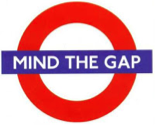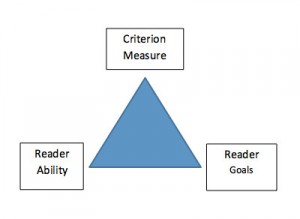by Roman Taraban, Ph.D. Texas Tech University
The question “What do you want to be when you grow up” should be familiar to all of us, as well as the typical responses: a firefighter, a pilot, a doctor, a nurse, a teacher, an astronaut. We playfully pose this question to children, not fully realizing we are inquiring about their ultimate self-identity – the deep and personal awareness of who they are. Children may not have a self-identity beyond “child,” “son” “daughter,” “student,” “soccer goalie,” “Girl Scout.” But over time, that will change.
So when does self-identity emerge, and how does metacognition help it along its developmental path? In this post, I propose that the emergence of self-identity is a lifelong process that begins in early childhood and has strong underpinnings in memory research. Flavell (1987) brings in the metacognitive factor, in part, through his discussion of metacognitive experiences. We all have self-identity, however, we know little about how to monitor and regulate it metacognitively in order to develop and maintain a healthy and adaptive sense of self.
Who Am I? Where Is My Life Going?
Self-identity emerges out of a specific kind of memory, known as episodic memory. Episodic memory enables a person to recall personally experienced events and to re-live those experiences in the here-and-now (Tulving, 2002). Fivush (2011) refers to the organized coherent sense of self that emerges from episodic experiences as autobiographical memory. Autobiographical memory allows a person to construct an evolving life story that creates a coherent sense of self-identity, of who we are. Thinking about these memory processes would seem to be a perfect place for metacognition to play a major role.
Autobiographical memory and, with it, narrative identity, develop starting in early childhood. A child’s identity is influenced, in part, by the opportunities for relating personal events through conversations with caregivers and friends. Mothers who are elaborative with their children before their preschool years have children who produce more coherent self-narratives by the end of their preschool years (Fivush, 2011). One way, for example, is by asking open-ended questions with some guiding information – e.g., What did we do at the park today? Parents, teachers, and friends continue to shape identity long into adulthood with the questions they ask and the personal experiences that they share. These interactions prompt reflections on one’s own experiences and resonate to the questions Who am I? Where is my life going?
Metacognitive Experiences
John H. Flavell, an American developmental psychologist, labeled higher-level cognition as metacognition and is regarded as a founding scholar in metacognitive research. A major component in Flavell’s theory is a metacognitive experience, which is “any kind of [a]ffective or cognitive conscious experience that is pertinent to the conduct of intellectual life” (Flavell, 1987, p. 24). Flavell suggests that there is a developmental element in individuals’ adaptive responsiveness to these experiences: “As one grows older one learns how to interpret and respond appropriately to these experiences” (p. 24). When do we have metacognitive experiences? According to Flavell, “when the cognitive situation is something between completely novel and completely familiar…where it is important to make correct inferences, judgments, and decisions” (p. 24).
The question of how and when self-identity evolves in college students was explored in an edited book on undergraduate research experiences (Taraban & Blanton, 2008). Students’ responses have the character of metacognitive experiences – i.e., conscious experiences in which inferences, judgments, and decisions are critical. It is metacognitive experiences like these that help us to theoretically bridge the development of self-identity from the nurturing discourses of mothers with young children, to the choice of fields of study in high school and college, and ultimately to a relatively stable identity as an adult professional:
Wyatt McMahon: Thus, as I grew up, when people asked me what I wanted to be, I realized that I wanted to help improve society, but I was not sure how.
Robin Henne: Before the tour [of Texas Tech Biology], I had no idea that research was even possible for biology majors; following the tour, I was convinced that research was what I wanted to do for my career.
Susan Harrell Yee: When I first started as a freshman at Texas Tech University, I chose environmental engineering as my major. It seemed a wise decision – I liked math and I liked ecology, and environmental engineering seemed to be a logical combination of the two. But after a single day, I knew the engineering route was not for me.
Engineering Identity
An area of great interest in current scholarly research involves engineering identity. Engineering educators are interested in how engineering students view themselves early on in their training (Loshbaugh & Claar, 2007), as well as what it means more generally to think of oneself as an engineer (Godwin, 2016; Morelock, 2017). The poignancy of this issue struck me when leading a discussion with graduate engineering students. The topic of discussion was, in part, personal narrative, which is the autobiographical narrative we create about ourselves and which is the basis of self-identity. It was evident from their comments that embracing a self-identity was not instantaneous upon choosing professional training. The following conveyed a sense of the struggle:
For the majority of my life, I have always been a “student” studying to become insert profession.
I sometimes to this day don’t consider myself as an engineer. I feel like throughout my time [here], I’ve always just been an “engineering student”.
I have struggled to see myself as an engineer but the older I get and the more secure I become in my field the easier it is to own and step into that narrative.
The Role of Metacognition
We are surrounded by instances of introspection regarding self-identity. Neal Diamond, the 20th century pop singer, presented his reflections as an existential crisis: I am…I said. Walt Whitman, the 19th century poet, gave a transcendental response in 52 parts in “Song of Myself,” and Reverend William Holmes Borders, Sr., a civil-rights activist, in the 1950s proclaimed “I Am Somebody” in a poem of self identity. Although we all have a sense of self-identity, very little explicit attention has been given in research to ways of metacognitively monitoring and guiding the development of a healthy and adaptive sense of self. This is one area where extending metacognitive theory beyond its current bounds could have a significant role in helping us to know who we are and to reach our true potential.
References
Fivush, R. (2011). The development of autobiographical memory. Annual Review of Psychology, 62, 559-582.
Flavell, J. H. (1987). Speculations about the nature and development of metacognition. In F. E. Weinert, & R. Kluwe (Eds.), Metacognition, motivation, and understanding (pp. 21-29). Hillsdale, NJ: Lawrence Erlbaum Associates.
Godwin, A. (2016). The development of a measure of engineering identity. In Proceedings, ASEE Annual Conference & Exposition, New Orleans, LA.
Loshbaugh, H., & Claar, B. (2007). Geeks are chic: Cultural identity and engineering students’ pathways to the profession. In Proceedings ASEE Annual Conference & Exposition, Honolulu, HI.
Morelock, J. R. (2017). A systematic literature review of engineering identity: Definitions, factors, and interventions affecting development, and means of measurement. European Journal of Engineering Education, 42(6), 1240-1262.
Taraban, R., & Blanton, R. L. (Eds.). (2008). Creating effective undergraduate research programs in science: The transformation from student to scientist. New York: Teachers College Press.
Tulving, E. (2002). Episodic memory: From mind to brain. Annual Review of Psychology, 53, 1-25.








